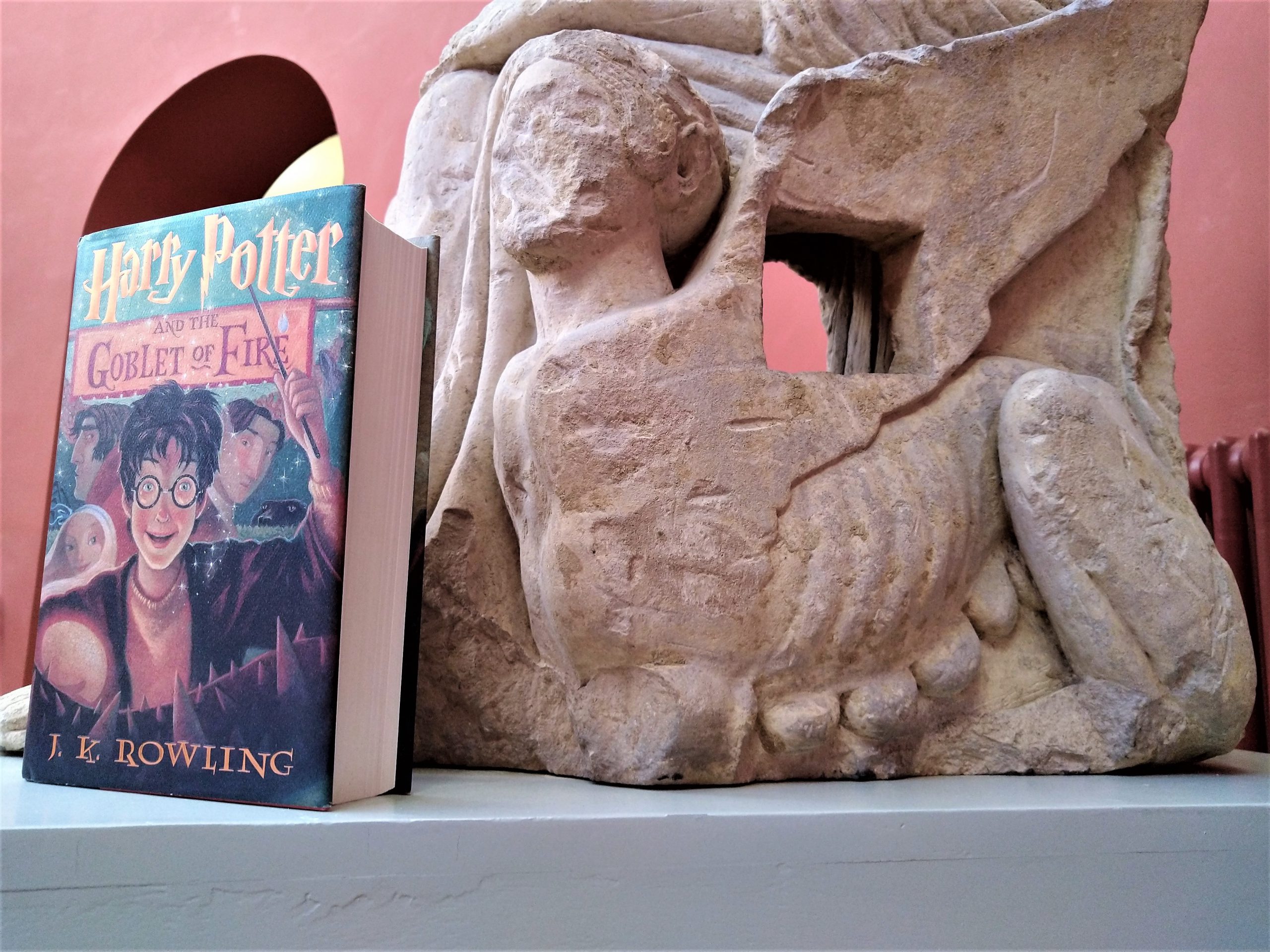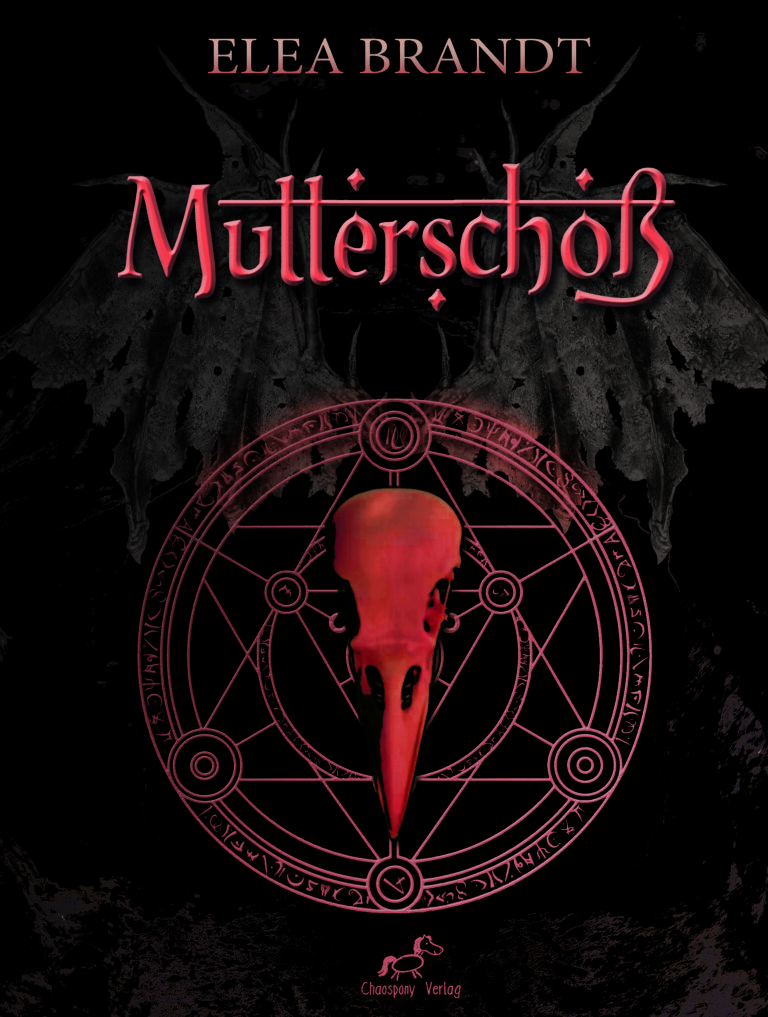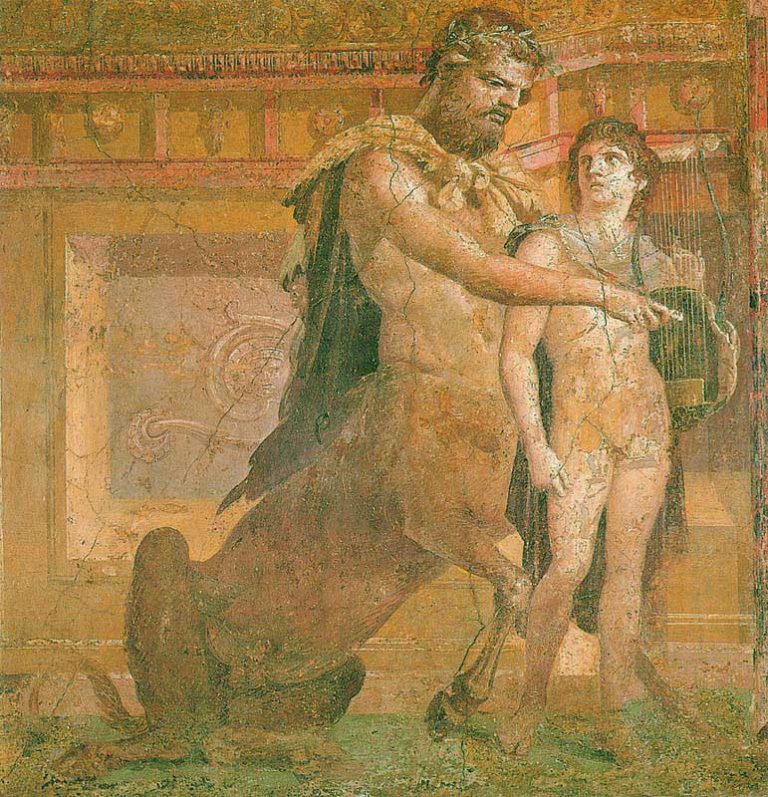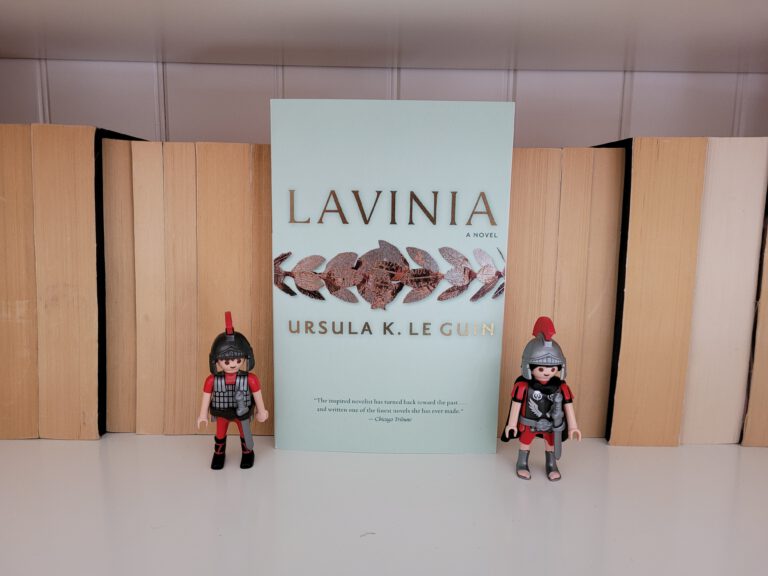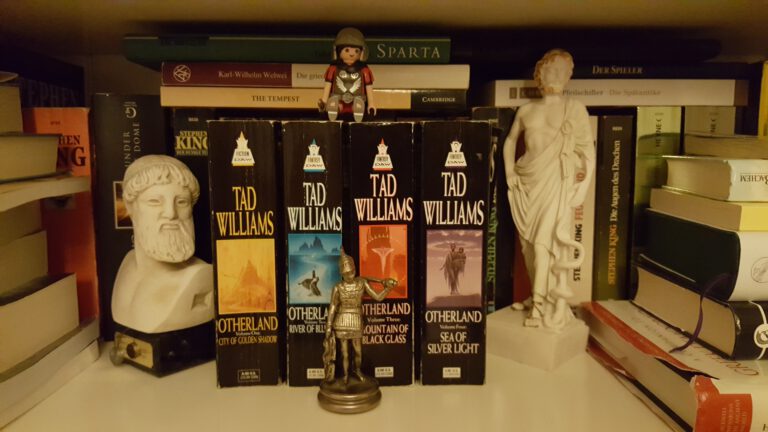Harry Potter and the Riddle of the Sphinx (Lisa Korbach)
Introduction
Harry Potter has become one of the biggest cultural phenomena in modern times. What J. K. Rowling wrote in her very first book of the series – “[This boy will] be famous – […] every child in our world will know his name!”[1] – referring to the fictional children in the series, could just as easily be referring to our world today, or as Potterheads like to call it, the muggle world.
The relation of the Harry Potter universe to ancient Greek mythology has been examined in this blog before[2], but this article focusses on one specific aspect of the reception of antiquity: the mythological creature of the Sphinx.
The title of this article, deliberately chosen to resemble the style of the book titles, I admit, might as well have suggested that, after book seven (and movie no. 8), Harry and his friends, Ron and Hermione, would embark on another magical adventure – this time featuring a powerful sphinx as the final boss – but this is not that story, sorry to disappoint you. If you are interested in why and how this clearly ancient mythical creature found her place into J. K. Rowling’s mind and her Harry Potter storyline, though, then maybe your disappointment will lift in the course of this article. Keep reading or be a muggle forever.
The basis for this analysis
Doing some research on the sphinx in Harry Potter, one pretty quickly ends up on a website powered by Fandom that is called the Harry Potter Wiki[3]. Dedicated fans have compiled a real treasury of information on any HP-related subject, including a list of all the appearances of sphinxes in any HP context.
Most people, however, only know the sphinx from her 5 minutes of fame in the novel Harry Potter and the Goblet of Fire, when she appears to Harry in the labyrinth of the final task of the Triwizard Tournament. Although she was unmercifully cut from the movie, she appears in a few other instances in the original content that Rowling produced. For this article, I focused on all the information about sphinxes that can be found in Rowling’s original canon, ensuring that the references of ancient times I would eventually find had been created by Rowling herself.
Where do sphinxes appear in the Harry Potter universe?
In total, the sphinx appears a mere five times in Rowling’s literary creation. Chronologically, they stretch from as early as 1998, to a quick reference in 2005. Twice, sphinxes other than the one Harry encounters in the labyrinth are discussed, the remaining appearances are discussions of the Triwizard sphinx and her particular characteristics. Bear with me for a quick overview of these cases.
A letter to the editor of the Daily Prophet
In 1998 and 1999, four issues of the British wizarding newspaper called the Daily Prophet made an unusual appearance in the muggle world: The publishing company Bloomsbury exclusively released these issues for a small group of British children, who were hand-picked by the publishing company and made up what was called the “Official Harry Potter Fanclub”. In an e-mail dating to the year 2004, Bloomsbury retrospectively confirmed that Rowling was the sole author of the released articles[4].
In the first issue[5], published on 31.07.1998, consolidated under the heading “Gripe with Gringott’s Bank”, a wizard called Mallory Twiddle had published a letter to the editor of the newspaper in which he heavily complained about the recent overzealous safety precautions of the wizarding bank called Gringotts. In order to get into his high security vault, he had to solve the riddle of a sphinx – the problem was that he couldn’t answer any question that was posed to him correctly, subsequently making him unable to reach his gold. “Indeed, I consider myself lucky to have escaped with my life…”[6], the letter goes on, revealing that either, Mr. Twiddle was a bit dim, to put it plainly, or that the new guards were truly dangerous and a wee bit over the top.
Harry Potter and the Goblet of Fire
In the summer of 2000, the novel Harry Potter and the Goblet of Fire was published, containing a scene in chapter 31 that featured a female sphinx as one of the challenges of the labyrinth of the third task the Triwizard champions had to overcome. I will go into depth about this scene later in the article. For now, just note that it is the source containing most of the information needed for a reception study on this topic.
Fantastic Beasts and where to find them
One year later, in 2001, Rowling published the guide book Fantastic Beasts and where to find them under the pseudonym of one of her invented characters, the wizard Newt Scamander. The book is a lexicon of magical creatures that exist in the world of Harry Potter.
The sphinx appears under classification 4, which is reserved for creatures that are considered dangerous and should only be handled by trained wizards or witches. The lexicon article goes on describing the sphinx as a creature from Egypt with a human head and the body of a lion. According to Scamander, the sphinx has been deployed for more than a thousand years by magicians to guard valuables or secret hideaways. The creature is described as supremely canny and having a great liking of riddles. It is noted to become dangerous only if the items in its care are threatened.
Brought up briefly in Harry Potter and the Order of the Phoenix and Harry Potter and the Half-Blood Prince
After the description in the lexicon of creatures, the sphinx is only mentioned twice more in the official cannon. In both instances, the speakers refer to the sphinx of the labyrinth, specifically.
In the relevant scene in Harry Potter and the Order of the Phoenix, published in 2003, Harry is angry because he was left at the Dursleys’ for weeks without Ron and Hermione’s letters giving him any information on what was going on in the wizarding world. In an argument with both of his friends, he tries to legitimise why he should be inaugurated into the secrets of the order, mentioning his adventures of the previous school year, in which he fought dragons and sphinxes and “every other foul thing”[7], as he puts it gallantly.
Furthermore, in Harry Potter and the Half-Blood Prince, which was published in 2005, the muggle prime minister remembers the moment in which Fudge told him the Ministry of Magic would import three foreign dragons and a sphinx for the Triwizard Tournament.[8]
Introducing Harry Potter and the Goblet of Fire
Let us move on to the most important scene for this analysis. In the fourth novel of the Harry Potter series, Harry is involuntarily chosen as a contestant in the Triwizard Tournament. He has to steal a golden egg from a vicious dragon, swim through a lake full of strange underwater creatures, and finally find his way through a labyrinth in search of the glistening Triwizard cup. Before he reaches that cup (and is unexpectedly transported away to a mysterious graveyard), however, he faces various tasks that have been placed into the labyrinth by the teachers beforehand. This is how he encounters the sphinx.
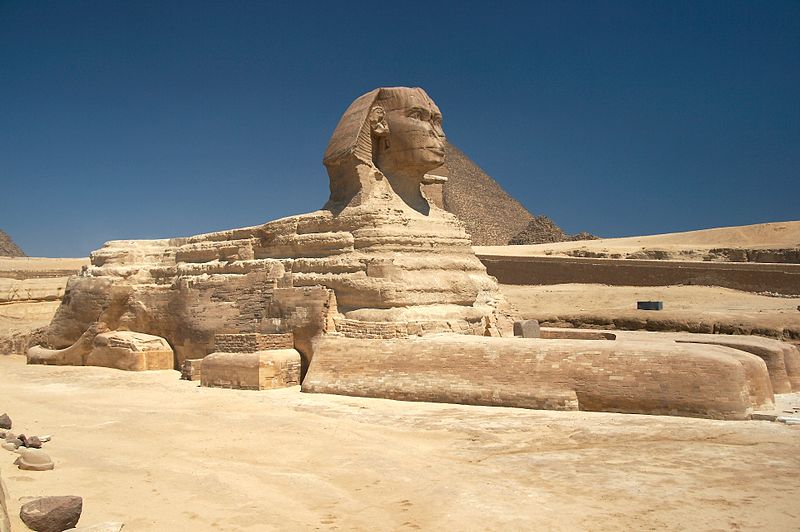
The female sphinx in the novel Harry Potter and the Goblet of Fire[10]
I have chosen to show you an abstract of the book, rather than paraphrasing the relevant scene. Here you go!
Joanne K. Rowling, Harry Potter and the Goblet of Fire, chapter 31, 545–547, part I
Every so often he hit more dead ends, but the increasing darkness made him feel sure he was getting near the heart of the maze. Then, as he strode down a long, straight path, he saw movement once again, and his beam of wandlight hit an extraordinary creature, one which he had only seen in picture form, in his Monster Books of Monsters.
It was a sphinx. It had the body of an overlarge lion: great clawed paws and a long yellowish tail ending in a brown tuft. Its head, however, was that of a woman. She turned her long, almond-shaped eyes upon Harry as he approached. He raised his wand, hesitating. She was not crouching as if to spring, but pacing from side to side of the path, blocking his progress. Then she spoke, in a deep, hoarse voice.
“You are very near your goal. The quickest way is past me.”
“So…so will you move, please?” said Harry, knowing what the answer was going to be.
“No,” she said, continuing to pace. “Not unless you can answer my riddle. Answer on your first guess – I let you past. Answer wrongly – I attack. Remain silent – I will let you walk away from me unscathed.”
Harry’s stomach slipped several notches. It was Hermione who was good at this sort of thing, not him. He weighed his chances. If the riddle was too hard, he could keep silent, get away from the sphinx unharmed, and try and find an alternative route to the centre.
Joanne K. Rowling, Harry Potter and the Goblet of Fire, chapter 31, 545–547, part II
“Okay”, he said. “Can I hear the riddle?”
The sphinx sat down upon her hind legs, in the very middle of the path, and recited:
“First think of the person who lives in disguise,
Who deals in secrets and tells naught but lies.
Next, tell me what’s always the last thing to mend,
The middle of middle and end of the end?
And finally give me the sound often heard,
During the search for a hard-to-find word.
Now string them together and answer me this,
Which creature would you be unwilling to kiss?”
Harry gaped at her.
[…]
“A creature I wouldn’t want to kiss…a spider!”
The sphinx smiled more broadly. She got up, stretched her front legs, and then moved aside for him to pass.
“Thanks!”, said Harry, and, amazed at his own brilliance, he dashed forward.[11]
Recap of the characteristics of sphinxes in the Harry Potter universe
To put it in a nutshell, sphinxes in Harry Potter are clever and dangerous creatures with the body of a lion and the head of a woman. Whenever they are mentioned, they get in the way of someone trying to reach a goal or treasure, only letting them pass if they solve the riddle posed by the sphinx. They have the ability to talk and to understand human beings.
Sphinxes in antiquity
How old is the concept of the sphinx? The earliest origins cannot be traced, although there were freestanding sculptures of sphinxes in Egypt as early as the middle of the 3rd millennium BC. They represented rulers and sometimes even gods. For example, the Egyptian god Tithoes appears in the form of a sphinx. The most famous statue of a sphinx is the so-called Great Sphinx of Giza, which is more than 20 metres high and was created around 4500 years ago.
From the middle of the 2nd millennium BC onwards, female sphinx statues can be seen in Syria and Anatolia. In popular belief, sphinxes were generally considered demons of death. The most well-known Greek myth about a sphinx is the myth of Oedipus saving the city of Thebes from a sphinx that kills everyone who cannot solve her riddle.[12]
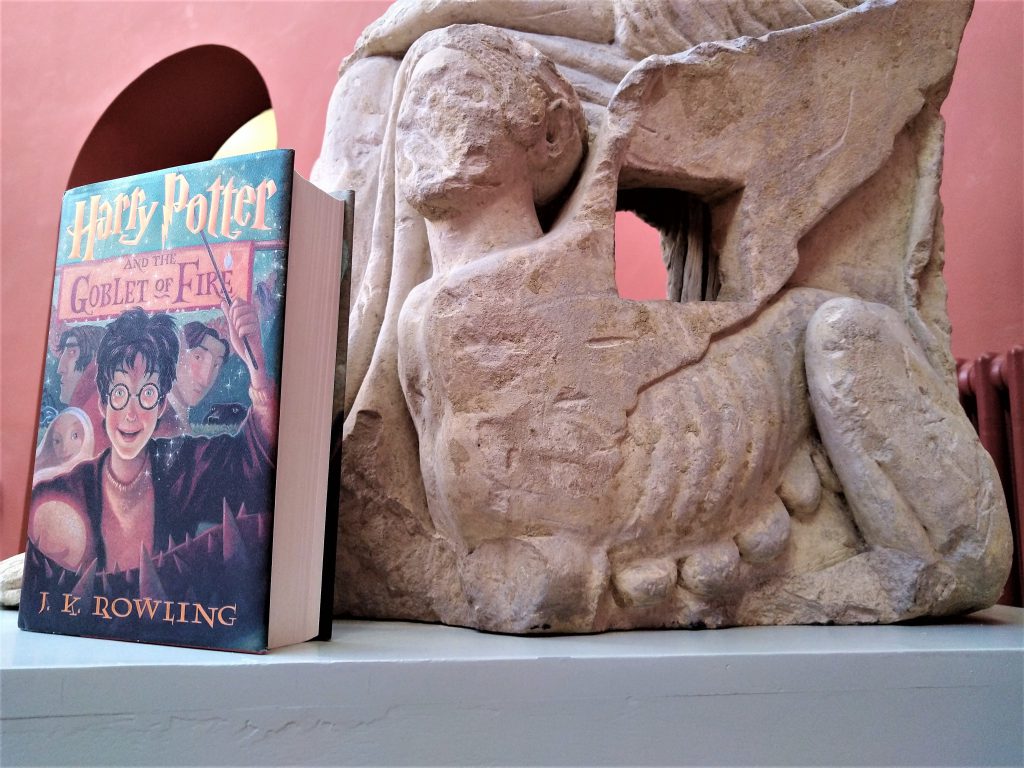
The story of Oedipus solving the riddle of the sphinx as told by Apollodorus
This story is best retold from the tales of the Athenian writer Apollodorus, who lived in the 2nd century BC:
[…] For Hera sent the Sphinx, whose mother was Echidna and her father Typhon; and she had the face of a woman, the breast and feet and tail of a lion, and the wings of a bird. And having learned a riddle from the Muses, she sat on Mount Phicium, and propounded it to the Thebans. And the riddle was this:— What is that which has one voice and yet becomes four-footed and two-footed and three-footed? Now the Thebans were in possession of an oracle which declared that they should be rid of the Sphinx whenever they had read her riddle; so they often met and discussed the answer, and when they could not find it the Sphinx used to snatch away one of them and gobble him up.
When many had perished, and last of all Creon’s son Haemon, Creon made proclamation that to him who should read the riddle he would give both the kingdom and the wife of Laius. On hearing that, Oedipus found the solution, declaring that the riddle of the Sphinx referred to man; for as a babe he is four-footed, going on four limbs, as an adult he is two-footed, and as an old man he gets besides a third support in a staff. So the Sphinx threw herself from the citadel, and Oedipus both succeeded to the kingdom and unwittingly married his mother, and begat sons by her […][13]
A conclusion of sphinxes in antiquity
In Greek mythology, the sphinx was a female monster, daughter of Echidna (after Hesiod, she’s half pretty girl, half giant snake) and Typhon, a monster with two snakelike legs and many snake heads. Sometimes, other mythical creatures are named as her parents, however.
Her shape is described as the following: The body of a lioness, the head of a woman, and sporting wings. She’s able to speak and understand humans. In the Theban myth, she harasses the inhabitants of the city of Thebes and the longer they need to solve the riddle, the more people she kills.
Comparison between the portrayal of sphinxes in the Harry Potter universe and the characteristics of sphinxes in ancient sources and art
As you have probably already guessed, J. K. Rowling adopted all of the most important characteristics of the ancient figure of the sphinx for her novel. Her interpretation of the creature merely doesn’t have wings and seems to think of the riddle herself.
Why does J. K. Rowling adopt concepts from ancient mythology?
Using recognition factors is an important custom in writing fiction. Harry Potter doesn’t just meet the sphinx in the labyrinth in search for the cup, but also encounters a boggart impersonating a dementor, a 3 m long blast-ended skrewt and an acromantula (a giant spider): All of these creatures had already been covered in the previous novels.
Concerning the sphinx, Rowling plays with another kind of recognition factor: The riddle of the sphinx of Thebes is a Greek myth that can be counted as part of the general knowledge of many of her readers.
Presumably, Rowling got the chance to study the figure of the sphinx in antiquity during her classics degree at the University of Exeter in the 1980s – she might even have used original sources. Subsequently, she integrated the mythical figure of the sphinx into her magical world.
How does she adopt the concept of the sphinx from ancient mythology?
Finally, let’s have a look at how exactly she adapts this fascinating creature from ancient times. On a scale derived from a reception studies seminar given by Michael Kleu in the winter semester of 2019/20 at the University of Bonn, her use of the concept of the sphinx counts as a punctual reception of antiquity. This term is defined as individual aspects like people, creatures or places being transplanted directly or indirectly into a fictional, non-ancient storyline.
Which specific kinds of dangers Harry is exposed to in the labyrinth isn’t of consequence for the storyline. Rowling took a figure, including its specific function, out of Greek mythology and planted it into her very own story.
By the bye: She does so without any pangs of conscience. Her apologia, given in a 2005 BBC Radio 4 interview by Stephen Fry, reads as follows:
I’ve taken horrible liberties with […] mythology, but I’m quite unashamed about that, because […] we’ve [the British] been invaded by people, we’ve appropriated their gods, we’ve taken their mythical creatures, and we’ve soldered them all together to make […] one of the richest folklores in the world […]. So I feel no compunction about borrowing from that freely, but adding a few things of my own.[14]
Miss Rowling – I think it’s safe to say we’re quite happy how you’ve done things and certainly hold no grudge.
About the author
Lisa Korbach studies Archaeological Sciences at the University of Bonn.
Bibliography
Apollodorus. 1921. Apollodorus, The Library. Translated by Sir James George Frazer. Harvard University Press, Cambridge, MA
Rowling, Joanne K. 1997. Harry Potter and the Philosopher’s Stone. Bloomsbury Publishing, London
Rowling, Joanne K. 2000. Harry Potter and the Goblet of Fire. Bloomsbury Publishing, London
Der Neue Pauly 11 (2001) 817f. s. v. Sphinx (N. Johannsen)
Rowling, Joanne K. 2003. Harry Potter and the Order of the Phoenix. Bloomsbury Publishing, London
Rowling, Joanne K. 2005. Harry Potter and the Half-Blood Prince. Bloomsbury Publishing, London
References
[1] Joanne K. Rowling, Harry Potter and the Philosopher’s Stone, chapter 1, 15
[2] https://fantastischeantike.de/harry-potter-and-the-greek-treasure-trove-how-and-why-greek-myths-were-incorporated-into-a-modern-magical-epic/
[3] https://harrypotter.fandom.com/wiki/Sphinx
[4] https://www.hp-lexicon.org/source/other-canon/dp/
[5] https://www.hp-lexicon.org/source/other-canon/dp/dp1/
[6] https://www.hp-lexicon.org/creature/large-magical-beasts/sphinx/
[7] Joanne K. Rowling, Harry Potter and the Order of the Phoenix, chapter 4, 64
[8] Joanne K. Rowling, Harry Potter and the Half-Blood Prince, chapter 1, 14
[9] https://de.wikipedia.org/wiki/Gro%C3%9Fe_Sphinx_von_Gizeh#/media/Datei:Great_Sphinx_of_Giza_-_20080716a.jpg
[10] This is a picture of the sphinx from the labyrinth originally composed for pottermore: https://harrypotter.fandom.com/wiki/Sphinx?file=Sphinx.png
[11] Joanne K. Rowling, Harry Potter and the Goblet of Fire, chapter 31, 545–547
[12] Der Neue Pauly 11 (2001) 817f. s. v. Sphinx (N. Johannsen)
[13] Apollod. 3, 5, 8. Translated by Sir James George Frazer.
[14] http://www.accio-quote.org/articles/2005/1205-bbc-fry.html
- Doctor Who trifft Sokrates und Platon im antiken Athen: The Chains of Olympus (Comic, 2011–2012) - 31. August 2024
- Die Rezeption mittelalterlicher Geschichte(n) in Peter S. Beagles „Das Letzte Einhorn“ - 16. Juli 2023
- Römische Arenen und Wilder Westen: Jasmin Jülichers „Stadt der Asche“ - 4. Oktober 2022
